N,N-Bis(3-aminopropyl)methylamine
- CAS NO.:105-83-9
- Empirical Formula: C7H19N3
- Molecular Weight: 145.25
- MDL number: MFCD00008217
- EINECS: 203-336-8
- SAFETY DATA SHEET (SDS)
- Update Date: 2024-12-18 14:15:32

What is N,N-Bis(3-aminopropyl)methylamine?
The Uses of N,N-Bis(3-aminopropyl)methylamine
3,3′-Diamino-N-methyldipropylamine was used in the synthesis of:
- new bischromone derivatives, potential anticancer drugs
- polyamine derivatives containing dimeric quinolone, cinnoline and phthalimide moieties
- 3-(2,4-dinitroanilino)-3′-amino-N-methyldipropylamine
Flammability and Explosibility
Non flammable
Safety Profile
Poison by inhalation and skincontact. Moderately toxic by ingestion. A skin and severeeye irritant. Combustible whenexposed to heat or flame. To fight fire, use foam, fog, drychemical. When heated to decomposition it emits toxicfumes of NOx.
Properties of N,N-Bis(3-aminopropyl)methylamine
| Melting point: | -30--28°C |
| Boiling point: | 110-112 °C/6 mmHg (lit.) |
| Density | 0.901 g/mL at 25 °C (lit.) |
| vapor pressure | 6 mm Hg ( 110 °C) |
| refractive index | n |
| Flash point: | 217 °F |
| storage temp. | Keep in dark place,Inert atmosphere,Room temperature |
| solubility | Completely miscible in water |
| form | Liquid |
| pka | pK1:6.32(+3);pK2:9.19(+2);pK3:10.33(+1) (30°C) |
| color | Colorless to Almost colorless |
| Water Solubility | 1000g/L at 20℃ |
| CAS DataBase Reference | 105-83-9(CAS DataBase Reference) |
| NIST Chemistry Reference | 1,3-Propanediamine, N-(3-aminopropyl)-N-methyl-(105-83-9) |
| EPA Substance Registry System | 1,3-Propanediamine, N-(3-aminopropyl)-N-methyl- (105-83-9) |
Safety information for N,N-Bis(3-aminopropyl)methylamine
| Signal word | Danger |
| Pictogram(s) |
 Corrosion Corrosives GHS05  Skull and Crossbones Acute Toxicity GHS06 |
| GHS Hazard Statements |
H302:Acute toxicity,oral H311:Acute toxicity,dermal H314:Skin corrosion/irritation H330:Acute toxicity,inhalation |
| Precautionary Statement Codes |
P260:Do not breathe dust/fume/gas/mist/vapours/spray. P280:Wear protective gloves/protective clothing/eye protection/face protection. P301+P312:IF SWALLOWED: call a POISON CENTER or doctor/physician IF you feel unwell. P303+P361+P353:IF ON SKIN (or hair): Remove/Take off Immediately all contaminated clothing. Rinse SKIN with water/shower. P305+P351+P338:IF IN EYES: Rinse cautiously with water for several minutes. Remove contact lenses, if present and easy to do. Continuerinsing. |
Computed Descriptors for N,N-Bis(3-aminopropyl)methylamine
New Products
(S)-3-Aminobutanenitrile hydrochloride 4-Methylphenylacetic acid N-Boc-D-alaninol N-BOC-D/L-ALANINOL Tert-butyl bis(2-chloroethyl)carbamate 3-Morpholino-1-(4-nitrophenyl)-5,6-dihydropyridin- 2(1H)-one Furan-2,5-Dicarboxylic Acid Tropic acid 1-Bromo-3,5-Di-Tert-Butylbenzene S-2-CHLORO PROPIONIC ACID ETHYL ISOCYANOACETATE 2-Bromo-1,3-Bis(Dimethylamino)Trimethinium Hexafluorophosphate 4-IODO BENZOIC ACID 3-NITRO-2-METHYL ANILINE 1-(2,4-DICHLOROPHENYL) ETHANAMINE (2-Hydroxyphenyl)acetonitrile 4-Bromopyrazole 2-(Cyanocyclohexyl)acetic acid 4-methoxy-3,5-dinitropyridine 1-(4-(aminomethyl)benzyl)urea hydrochloride 2-aminopropyl benzoate hydrochloride diethyl 2-(2-((tertbutoxycarbonyl)amino) ethyl)malonate tert-butyl 4- (ureidomethyl)benzylcarbamate Ethyl-2-chloro((4-methoxyphenyl)hydrazono)acetateRelated products of tetrahydrofuran
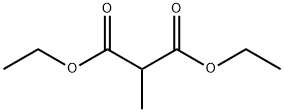
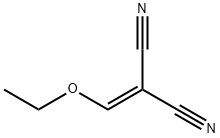

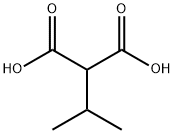
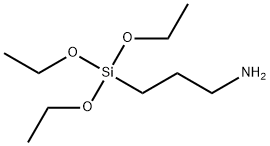

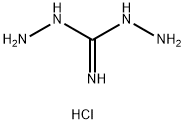
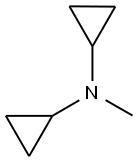
You may like
-
 105-83-9 Methyl imino bis propylamine 99%View Details
105-83-9 Methyl imino bis propylamine 99%View Details
105-83-9 -
 3,3'-Diamino-N-methyldipropylamine CAS 105-83-9View Details
3,3'-Diamino-N-methyldipropylamine CAS 105-83-9View Details
105-83-9 -
 3,3′-Diamino-N-methyldipropylamine CAS 105-83-9View Details
3,3′-Diamino-N-methyldipropylamine CAS 105-83-9View Details
105-83-9 -
 1975-50-4 98%View Details
1975-50-4 98%View Details
1975-50-4 -
 2-HYDROXY BENZYL ALCOHOL 98%View Details
2-HYDROXY BENZYL ALCOHOL 98%View Details
90-01-7 -
 2-Chloro-1,3-Bis(Dimethylamino)Trimethinium Hexafluorophosphate 221615-75-4 98%View Details
2-Chloro-1,3-Bis(Dimethylamino)Trimethinium Hexafluorophosphate 221615-75-4 98%View Details
221615-75-4 -
 14714-50-2 (2-Hydroxyphenyl)acetonitrile 98+View Details
14714-50-2 (2-Hydroxyphenyl)acetonitrile 98+View Details
14714-50-2 -
 118753-70-1 98+View Details
118753-70-1 98+View Details
118753-70-1
Statement: All products displayed on this website are only used for non medical purposes such as industrial applications or scientific research, and cannot be used for clinical diagnosis or treatment of humans or animals. They are not medicinal or edible.